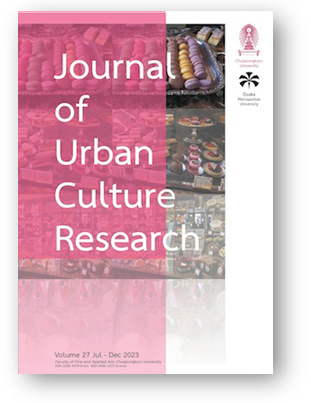The Sociological Approach as a Driver of Change in the Traditional Wedding Attire of West Sumatra Indonesia: An Aesthetic Analysis
DOI:
https://doi.org/10.14456/jucr.2023.22Keywords:
Fashion Aesthetics; Traditional Wedding Attire; Culture; Sociological approach; West Sumatra; IndonesiaAbstract
The rapid development of the modern era brings unavoidable concept shifts and poses challenges, especially in fashion. The objectives of this study are: 1) to examine the understanding of fashion designers, fashion stylists, clothing rentals, and customers; 2) to evaluate the aesthetics of Minangkabau wedding attire; 3) to analyze the driver's of changes in the design aesthetics elements of traditional wedding attire based on the sociological approach theory by Arnold Hauser. This study uses a mixed-method through open-ended structured questions and focuses group discussions with a descriptive approach. The findings of this study are to determine the driving force and aspects of aesthetic changes in traditional clothing. This study proposes a conceptual framework for a sociological approach of fashion adapted from Arnold Hauser's Theory. The results showed that self-concepts in fashion design, socio-cultural changes in clothing, the role of fashion and new inventions are drivers of changes in traditional clothing aesthetics.
Downloads
Published
How to Cite
Issue
Section
License

This work is licensed under a Creative Commons Attribution-NonCommercial-NoDerivatives 4.0 International License.
Authors authorize the JUCR to publish their materials both in print and online while retaining their full individual copyright. The copyright of JUCR volumes is retained by Chulalongkorn University.
The views and opinions expressed herein are those of the individual author(s) and do not necessarily reflect the policies or opinions of the Journal (JUCR), it editors and staff, Chulalongkorn University, or Osaka Metropolitan University.








